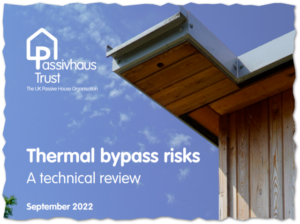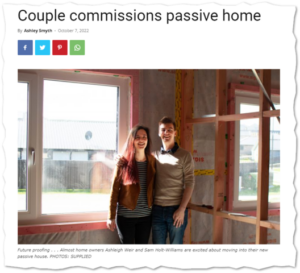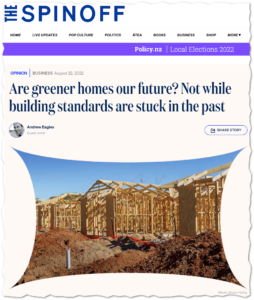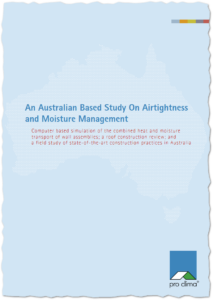ProClima has released an in-depth look at lightweight timber framing construction for walls and roof (and including warm roofs and their hybrids) across the climate zones of Australia. The report, by Jesse Clarke, is An Australian Based Study On Airtightness and Moisture Management and it is available to download. It includes tropical climates. That will be of considerable academic interest …
BIM models are accurate enough

Engineers use lots of computer modelling tools. It’s our professional responsibility to understand those tools well enough to understand their limitations and determine when they are sufficiently accurate. This accuracy (ie computer prediction matching reality) is essential to providing good competent advice. At the core of understanding are validation studies like the ones below: ASHRAE RP-1117 and the more recent …
Thermal bypassing publication a must-read

If you design building assemblies you need to make the time to read this new publication. Thermal bypass—the air movement through and around insulation—has a very big impact on building performance. In the High-Performance Construction Details Handbook, I noted that thermal bypass can reduce the thermal performance of wall assemblies by 30% or more. The Passivhaus Trust in the UK …
Energy modelling at heart of Passive House

Often when people talk about Passive House, they’ll focus on those things they can see and touch, like triple-pane windows or mechanical ventilation. But the core of the Passive House methodology is the part you can’t see: it’s the thermal energy model. That modelling is how the design team can make sure this young couple’s first home is going to …
Leaky building crisis spreads to Australia

Here’s a detailed but accessible write up about leaky homes that takes an international perspective. Written by Australian lawyers who specialise in construction law, it considers the risks emerging for Australia and compares it to the Canadian and New Zealand experience. Lawyer Kim Lovegrove says increasing numbers of leaky apartments are coming to light in Australia. He notes that in …
PHPP accuracy proven by comparison to other tools

PHPP matches quite well for monthly heating and cooling energy demand when compared to lots of dynamic energy modelling software tools. And it should, as the equations/methods in PHPP have been developed (and simplified) by reference to many dynamic simulations. The bar graph comparing the monthly heating and cooling energy demand has the PHPP as the rightmost bar. Note that …
Calculating building system shutdowns in PHPP

It’s common for some non-residential buildings to be unoccupied for periods of time, during which the ventilation and conditioning is turned off. Schools and office buildings are common examples; think of after school hours each day or weekends where heating/cooling may be on only for 6 hours each day. In such circumstances, turning off ventilation and conditioning during the unoccupied …
World’s biggest Passive House office rises in Boston

Sometimes I take a look to see what’s going on in Massachusetts, just for old times sake. And look at this: the Winthrop Center is a Boston high-rise that will be the largest Passive House office building in the world. It’s a 211m high mixed-use tower with 75,000m2 of office space and 317 luxury residences, among other facilities. I’ve worked on …
Remove regulators’ liability and we might see more innovation in the building sector

Writing for The Spinoff recently, NZGBC head Andrew Eagles takes to task the Commerce Commission’s findings into competition in the residential building supplies market. “Not only does our industry suffer from a reliance on the ‘tried and tested’, but this conservativism is backed by a risk structure that incentivises our building officials to be wary of anything new. Products commonplace …
